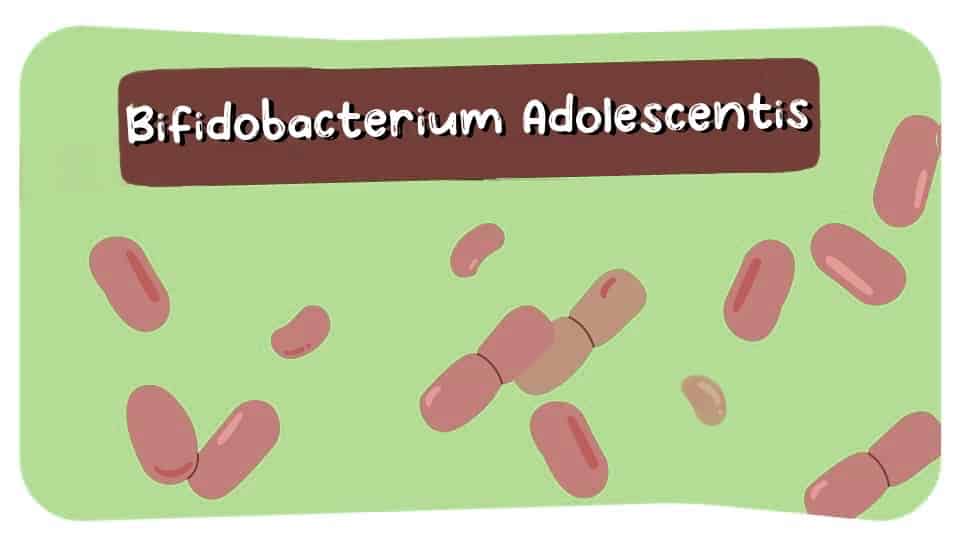3 Bifidobacterium Adolescentis Health Benefits: Digestive And Fungal

Benefits of Bifidobacterium Adolescentis a bacteria found in the human intestinal tract include digestive and fungal healing properties
Bifidobacterium Adolescentis is a type of gram positive bacteria that is commonly found in the gastrointestinal tract and is believed to have a variety of potential human health benefits.
Here are 3 health benefits of Bifidobacterium Adolescentis.
1. Improves Constipation In Mice
Constipation in mice refers to a condition where the passage of feces is infrequent or difficult, resulting in delayed or incomplete bowel movements.
A 2017 study authored by Linlin Wang evaluated Bifidobacterium adolescentis probiotic bacteria in alleviating constipation in mice and found that B. adolescentis CCFM 669 and 667 strains exhibited efficacy in relieving constipation,
During the study, mice were orally administered one of three strains of B. adolescentis (CCFM 626, 667, and 669) for 17 days, while the researchers assessed various indicators. These included constipation levels, the concentration of short-chain fatty acids in the feces, and the composition of the fecal microbiota.
2. Improves Candida Alibcans Infection
Candida albicans growth refers to the proliferation of a common type of yeast-like fungus called Candida albicans, which can cause infections, particularly in the mouth, genitals, and bloodstream, especially in individuals with weakened immune systems.
A 2022 review authored by Liviana Ricci found Bifidobacterium Adolescentis exhibited the most robust immunostimulatory and killing effect against Candida Albicans compared to the control group.
Further investigations uncovered that fermentation acids such as acetate and lactate, accompanied by a decrease in pH, were the primary factors driving the inhibitory activity.
3. Increases Butyrate
Butyrate is a short-chain fatty acid produced by beneficial bacteria in the gut through the fermentation of dietary fiber. It plays a crucial role in supporting gut health by nourishing the cells lining the colon, promoting a healthy intestinal barrier, and reducing inflammation, thus helping to prevent or alleviate conditions associated with leaky gut syndrome.
A 2006 study authored by Alvaro Belenguer investigated the potential metabolic interactions between Bifidobacterium adolescentis and butyrate-producing bacteria in the human gut.
The results showed that B. adolescentis could cross-feed lactate-utilizing bacteria, leading to the production of butyrate, a beneficial short-chain fatty acid.
These findings highlight two distinct mechanisms of metabolic cross-feeding between B. adolescentis and butyrate-forming bacteria, suggesting their role in maintaining a healthy gut ecosystem.
how to increase bifidobacterium adolescentis?
You can increase Bifidobacterium Adolescentis in your microbiome by eating more Inulin dietary fiber. A 2009 study authored by Carlett Ramirez-Farias showed Inulin intake was able to increase Bifidobacterium Adolescentis by 337%.
Data from the study showed an increase from 0.89% to 3.9% of the total microbiota which represents an absolute increase of 3.01 percentage points (3.9% - 0.89% = 3.01%). In relative terms, this corresponds to an approximately 337% increase (3.01 / 0.89 = 3.37).
What Foods Contain Bifidobacterium Adolescentis?
Fermented foods like kimch, miso, tempeh, sourdough, sauerkraut and dairy foods like Kefir and Yogurt contain Bifidobacterium Adolescentis.
Prebiotic foods like Aspargus, Bananas, Garlic and Jerusalem artichokes are good sources of Inulin which as explained previously can increase Bifidobacterium Adolescentis.
Bifidobacterium Adolescentis vs Bifidobacterium Lactis
Bifidobacterium adolescentis and Bifidobacterium lactis are two similar beneficial gram-positive gut bacteria.
B. adolescentis metabolizes various carbohydrates and promotes butyrate production, while B. lactis is resilient and supports gut health but both contribute to a balanced and healthy gut.
Dr. Sara Mesilhy has a Master’s degree in Gastroenterology and holds a membership with the Royal College of Physicians of the United Kingdom. She completed her Bachelor of Medicine, Bachelor of Surgery (MBBS) at Cairo University and is currently part of the ProbioticReviewGirl medical team.